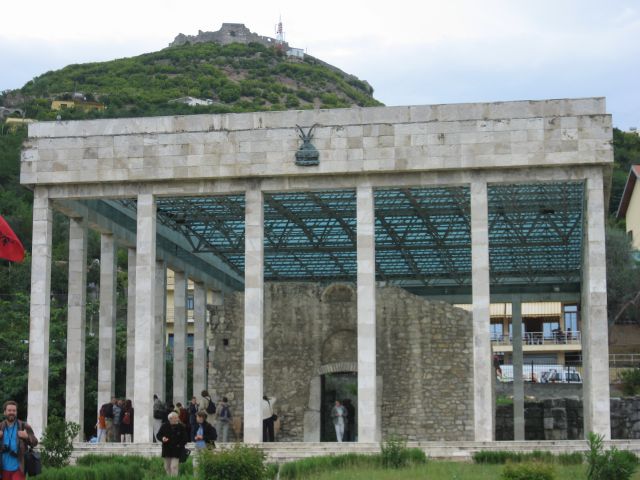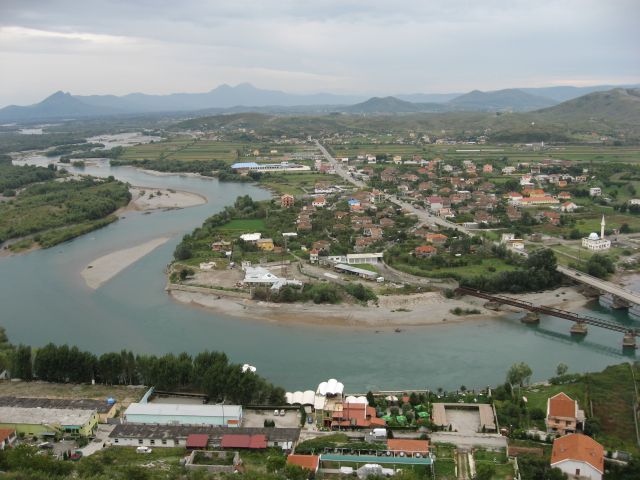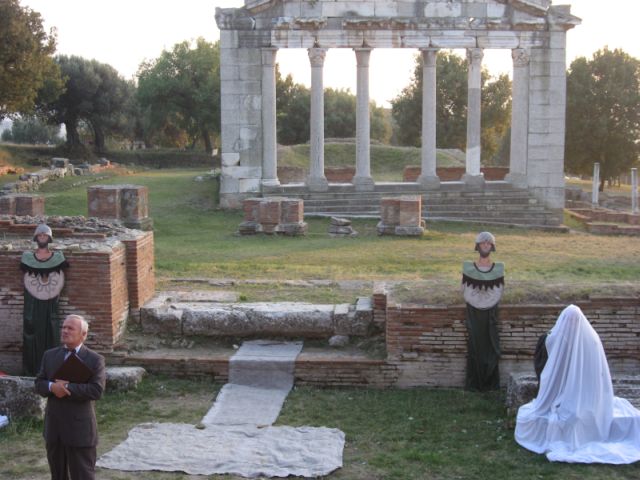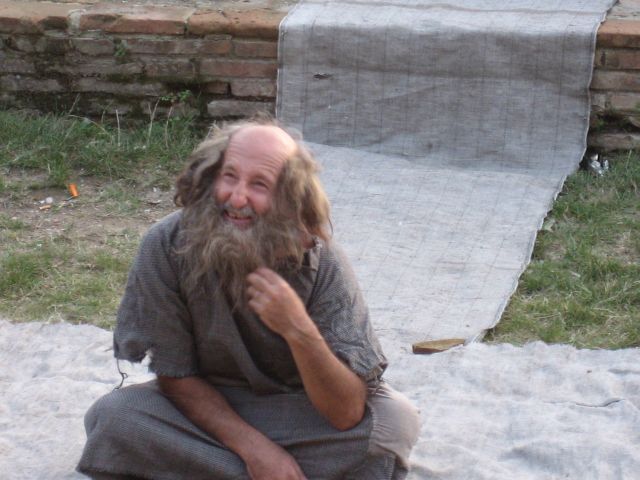Lezha & Shkodra
Finally an outing. The last week of September, Durres hosted the International Conference on Roman Ceramics (RFCF) and all of the archaeologists from the museum were involved some way. As a result of their involvement, Criss got to attend. Never mind that most of the sessions were presented in Italian – he doesn’t understand Albanian either and sits in the office all day. At least this exercise has a pay-off.
The first trip was heading north to Lezha and Shkodra. Lezha is the location where Skanderbeu died. Skanderbeu is the national hero because of his stance against the Turks. During his reign, Albania had a brief period of independence. So at the site of an ancient church, they have created a monument to him. Above the church is the old castle from the 1400s.

The plan was to visit the memorial, see part of the ongoing excavation and then visit the castle. Well the excavation had uncovered lots of pieces of broken pottery, so these archaeologists were unwilling to leave promptly. In order to make up some time, we attempted to take the bus up to the castle. We were unable to make the first turn and the driver had to back down. Thank goodness it was only about 100 meters. So, they drove us back to the original location and we walked up the hill to the castle. It is always amazing what you can see from these locations and the view of the plains out to the beaches was great.
Back to bus and to lunch. It was a very Albanian process where 100 people are being feed in a restaurant that has seating for about 50 and a single restroom. It the meal was served cafeteria style and the food was out on a single table. For the most part the food was good (the stuffed fig leaves were tough and Carol says it is because they used mature fig leaves instead of new leaves), but we had the feeling we were taxing the resources of the restaurant. It took a full two hours and then some to get away from there and on to Shkodra.
Shkodra is the northern most city along the coast. From the Rozafa Castle, you can  see the across Lake Orhid which forms part of the border between Montenegro and Albania. This castle sits on a hilltop overlooking the confluence of three rivers. The earliest foundations date back to Illyrian times, 400 BCE while the visible structure is from the Middle Ages. Walking into the castle, the defense systems were observable even by the unobservive (us). Water was collected from rainfall and funneled to underground cisterns. There were 3 lines of defense within the castle and underground passages running throughout the castle. These security measures allowed the castle to stand for 2 sieges before falling to the Ottomans in 1479.
see the across Lake Orhid which forms part of the border between Montenegro and Albania. This castle sits on a hilltop overlooking the confluence of three rivers. The earliest foundations date back to Illyrian times, 400 BCE while the visible structure is from the Middle Ages. Walking into the castle, the defense systems were observable even by the unobservive (us). Water was collected from rainfall and funneled to underground cisterns. There were 3 lines of defense within the castle and underground passages running throughout the castle. These security measures allowed the castle to stand for 2 sieges before falling to the Ottomans in 1479.
As dusk approached we headed into town for a very relaxing meal and a chance to talk to some of the archaeologists about their work and about other things. One couple, dressed in Cubs baseball jackets and caps, were actually living in France. He was from the States and she was Romanian. It was very interesting to hear about their work and her stories about Romania. After dinner we were back on the bus for a 2 and ½-hour ride back to Durres. In route, we were treated to some rather risqué videos of folk music, courtesy of the driver and our guide. It was the same videos shown on TV in your home and in the locales. More on that later.
Apollonia
The second outing was a trip to Apollonia. Apollonia is one of the oldest cities or sites in Albania, dating from 600 BCE and has only been partially excavated and is protected. Its beginnings were as a port city, but the Vjosa River changed its course south (as a result of an earthquake) and the city lost its port and importance. It is very difficult, at this late time, to see any of the remains of the old river channel or harbor. A church and monastery was built in the 13th C from the ruins of the ancient city and is now a museum. The rest of the site has had limited excavation. But the high point of this trip was a production of the ‘Apology of Socrates’, performed by Albanian actor Mirush Kabashi who was awarded the “Golden Sphinx” for his interpretation of this play.

We sat in the open air, ancient amphitheatre with the columns of the bouleuterion (whatever building that was) in the background watching a beautiful sunset, waiting for the production to begin. As dusk fell, the play began and even though presented in Albanian, it was captivating. It was hard to decide whether to watch the screen with the translation or the actor.  It is very difficult to capture the experience of watching a Greek play in a Greek setting with words, so we can simply say it was memorable.
It is very difficult to capture the experience of watching a Greek play in a Greek setting with words, so we can simply say it was memorable.